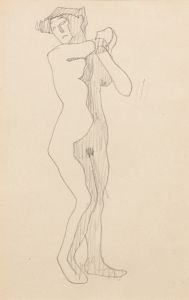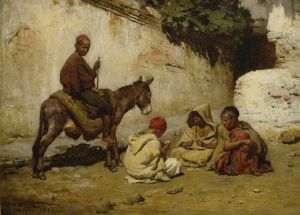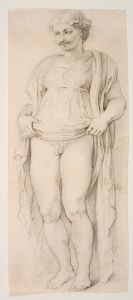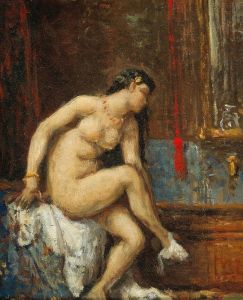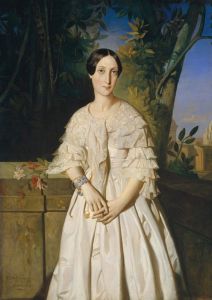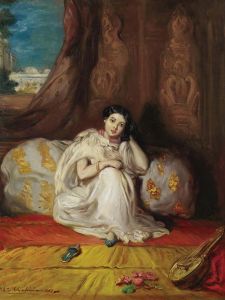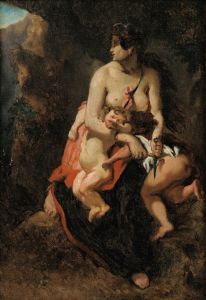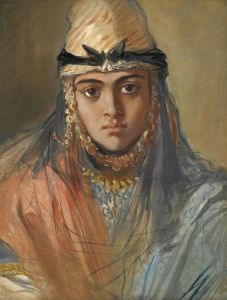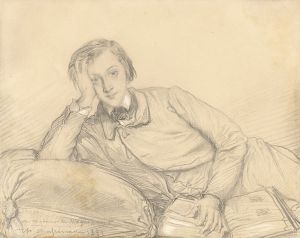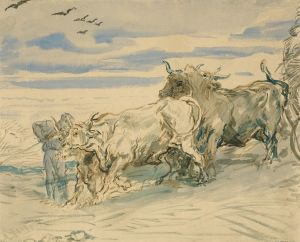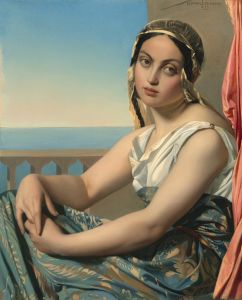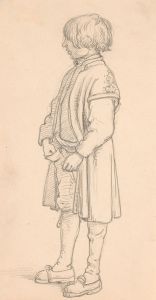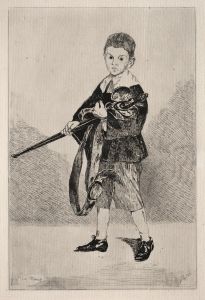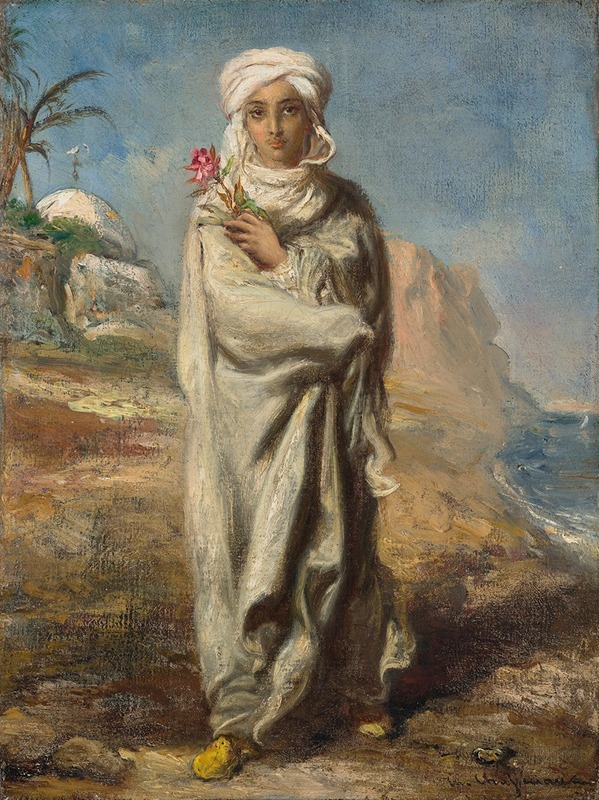
Jeune homme arabe debout
A hand-painted replica of Théodore Chassériau’s masterpiece Jeune homme arabe debout, meticulously crafted by professional artists to capture the true essence of the original. Each piece is created with museum-quality canvas and rare mineral pigments, carefully painted by experienced artists with delicate brushstrokes and rich, layered colors to perfectly recreate the texture of the original artwork. Unlike machine-printed reproductions, this hand-painted version brings the painting to life, infused with the artist’s emotions and skill in every stroke. Whether for personal collection or home decoration, it instantly elevates the artistic atmosphere of any space.
Théodore Chassériau's "Jeune homme arabe debout" is a notable painting by the 19th-century French Romantic artist, renowned for his unique blend of neoclassical precision and romantic emotion. Chassériau, born in 1819 in Santo Domingo (now the Dominican Republic), was a prodigious talent who began his artistic training at a young age. He was a student of the famous neoclassical painter Jean-Auguste-Dominique Ingres, which significantly influenced his early works. However, Chassériau later developed his style by incorporating elements from the Romantic movement, particularly inspired by Eugène Delacroix.
"Jeune homme arabe debout," which translates to "Standing Arab Young Man," is a reflection of Chassériau's fascination with Orientalism, a trend in 19th-century European art that depicted the Middle East and North Africa as exotic and romanticized locales. This interest was partly fueled by the French colonial expansion into these regions and the subsequent cultural exchanges. Chassériau's travels to Algeria in 1846 had a profound impact on his work, providing him with firsthand exposure to the landscapes, people, and cultures that would feature prominently in his paintings.
The painting itself portrays a young Arab man standing, capturing the viewer's attention with its striking composition and the subject's dignified presence. Chassériau's use of light and shadow, along with his attention to detail in the rendering of the figure's clothing and posture, exemplifies his technical skill and his ability to convey a sense of immediacy and presence. The young man's attire and stance suggest a blend of traditional and romanticized elements, typical of Orientalist art, which often emphasized the perceived exoticism and mystery of its subjects.
Chassériau's work is characterized by its rich color palette and fluid brushwork, both of which are evident in "Jeune homme arabe debout." The painting's background is typically subdued, allowing the figure to stand out prominently, a technique Chassériau employed to focus attention on the human form and its expressive potential. This approach reflects his belief in the power of the human figure to convey emotion and narrative, a hallmark of his artistic philosophy.
Throughout his career, Chassériau sought to bridge the gap between the classical and romantic schools of painting, creating works that were both technically accomplished and emotionally resonant. "Jeune homme arabe debout" is a testament to this synthesis, showcasing his ability to capture the spirit of his subjects while maintaining a high degree of formal rigor.
Chassériau's influence extended beyond his lifetime, impacting artists such as Gustave Moreau and even the Symbolists, who admired his ability to infuse his works with a sense of mystery and depth. Today, his paintings, including "Jeune homme arabe debout," are appreciated for their aesthetic beauty and their role in the broader context of 19th-century art movements.
In summary, "Jeune homme arabe debout" is a significant work within Théodore Chassériau's oeuvre, exemplifying his mastery of form, color, and emotion. It stands as a representation of the Orientalist fascination of the time and highlights Chassériau's unique position in the art world as a bridge between neoclassicism and romanticism.





